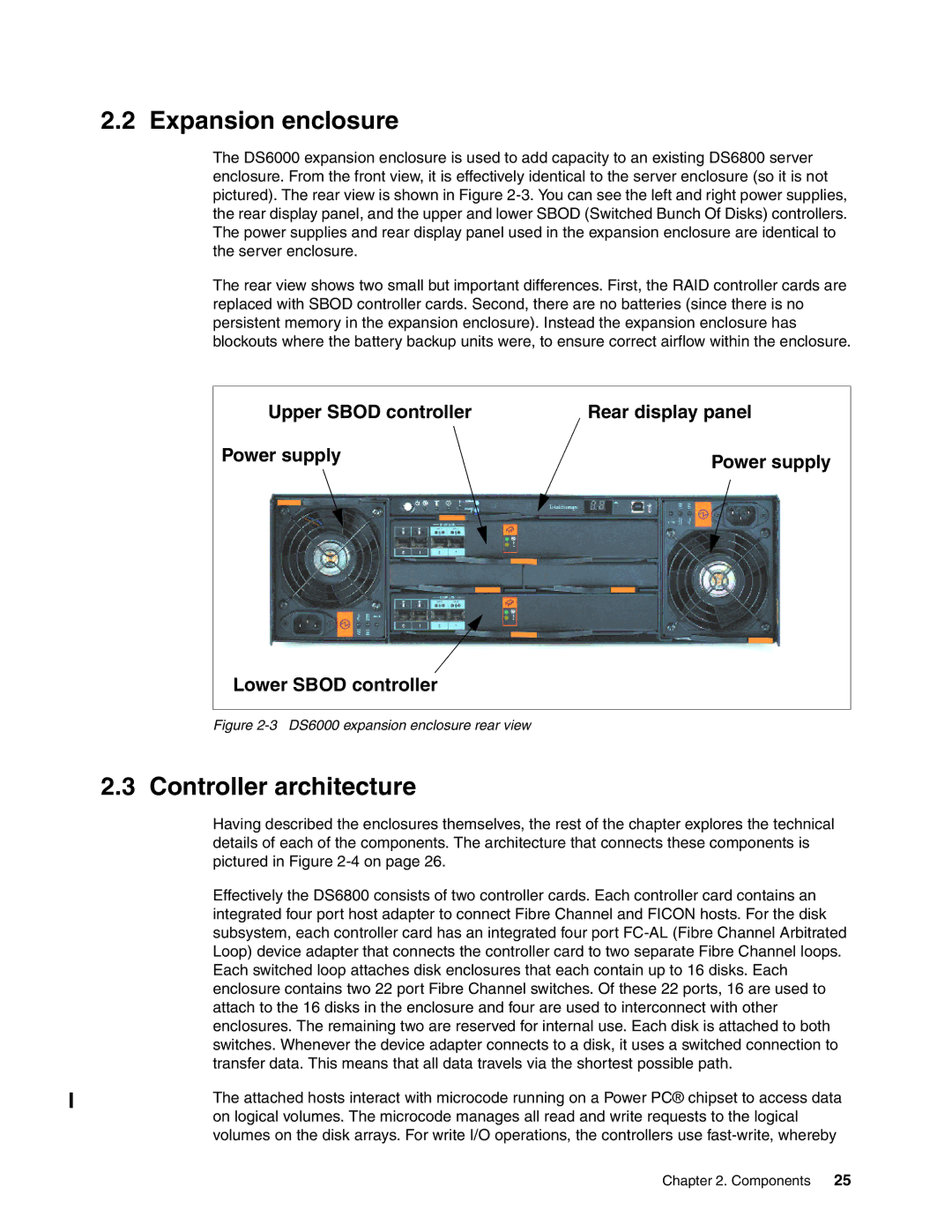
2.2 Expansion enclosure
The DS6000 expansion enclosure is used to add capacity to an existing DS6800 server enclosure. From the front view, it is effectively identical to the server enclosure (so it is not pictured). The rear view is shown in Figure
The rear view shows two small but important differences. First, the RAID controller cards are replaced with SBOD controller cards. Second, there are no batteries (since there is no persistent memory in the expansion enclosure). Instead the expansion enclosure has blockouts where the battery backup units were, to ensure correct airflow within the enclosure.
Upper SBOD controller | Rear display panel |
Power supply | Power supply |
|
Lower SBOD controller
Figure 2-3 DS6000 expansion enclosure rear view
2.3 Controller architecture
Having described the enclosures themselves, the rest of the chapter explores the technical details of each of the components. The architecture that connects these components is pictured in Figure
Effectively the DS6800 consists of two controller cards. Each controller card contains an integrated four port host adapter to connect Fibre Channel and FICON hosts. For the disk subsystem, each controller card has an integrated four port
The attached hosts interact with microcode running on a Power PC® chipset to access data on logical volumes. The microcode manages all read and write requests to the logical volumes on the disk arrays. For write I/O operations, the controllers use
Chapter 2. Components 25
